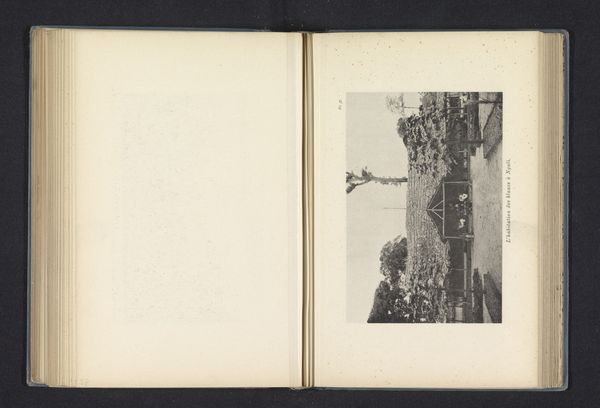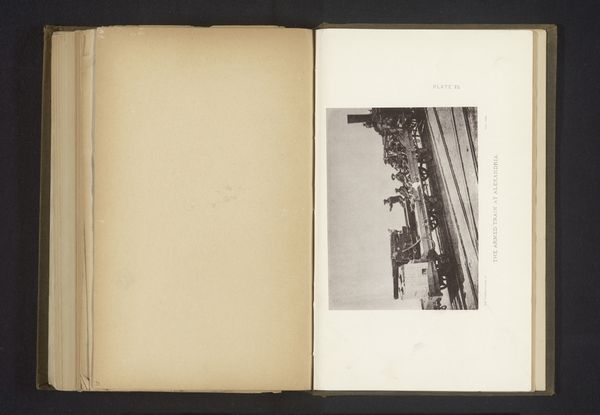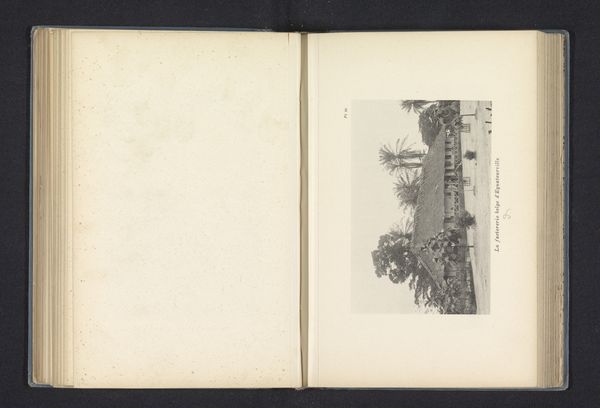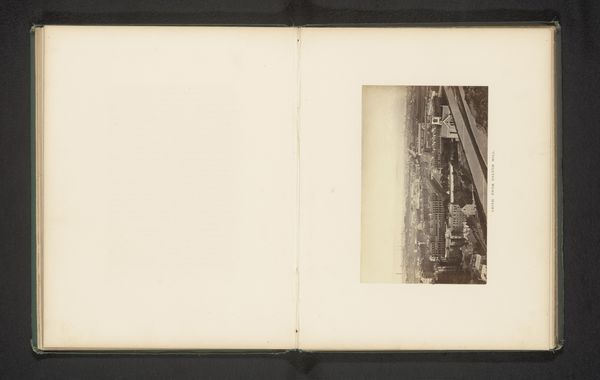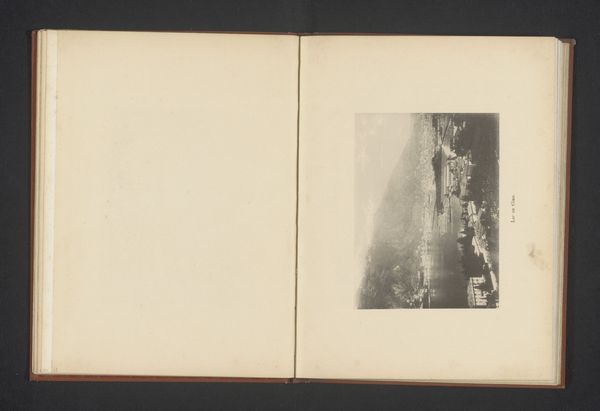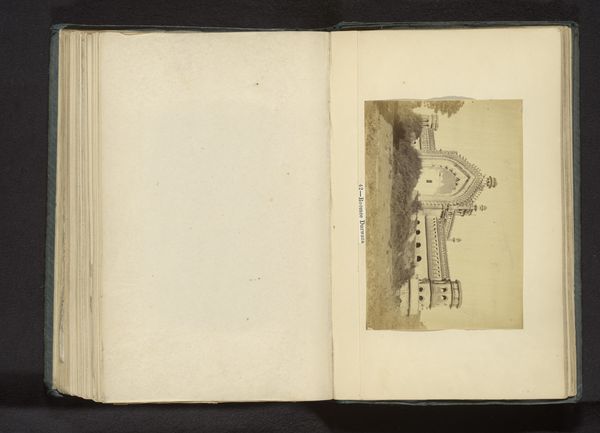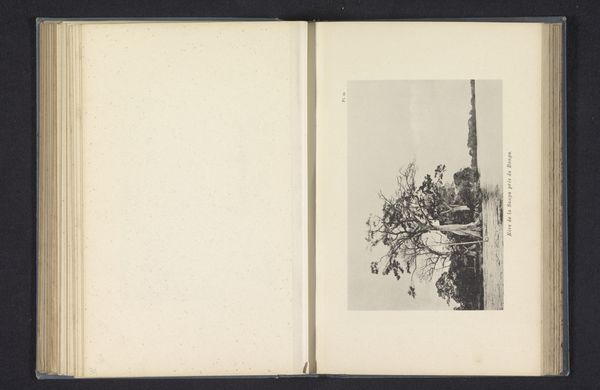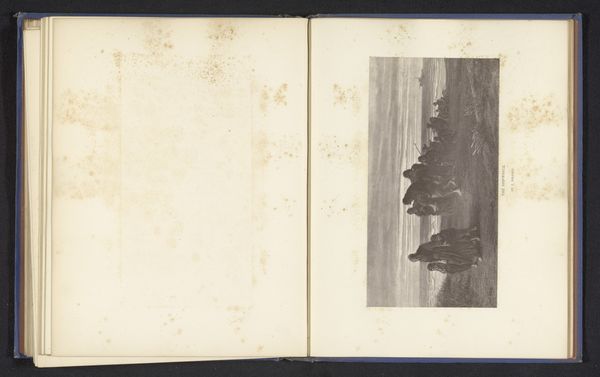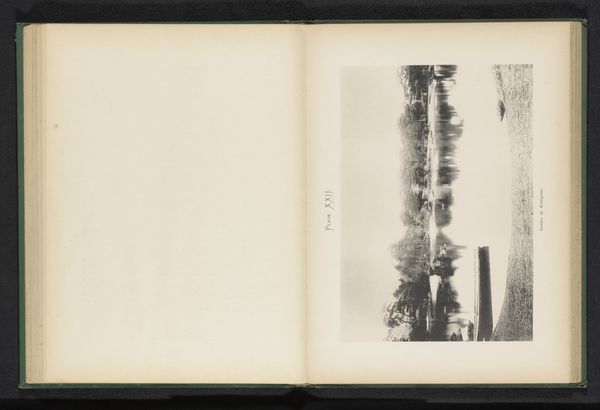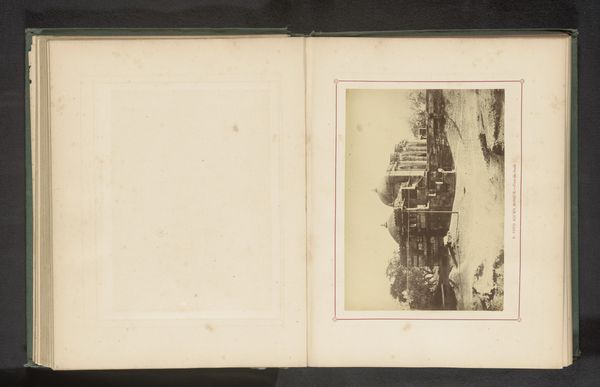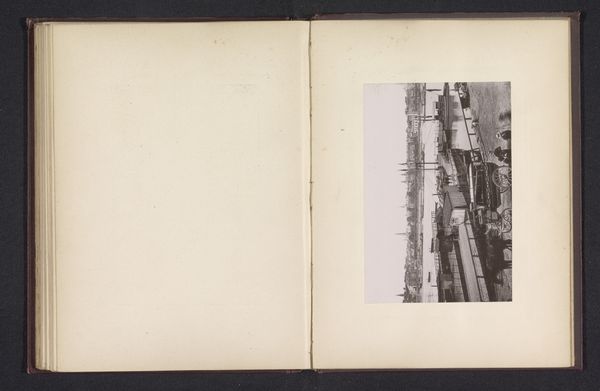
drawing, print, paper, ink, architecture
#
drawing
# print
#
landscape
#
paper
#
ink
#
orientalism
#
architecture
#
building
Dimensions: height 108 mm, width 161 mm
Copyright: Rijks Museum: Open Domain
Curator: Looking at this image, "Zuidelijke gevel van het missiegebouw te Nieuw-Antwerpen", or "Southern facade of the mission building in New Antwerp," made in 1896 by Franz Thonner, the scene appears almost stark due to the print and ink on paper. It captures a rather detailed rendering of a mission in what was then a Belgian colonial outpost. What stands out to you immediately? Editor: It’s undeniably evocative. A palm tree dominates the frame; its fronds are rendered with meticulous detail, offering a somewhat romanticized vision. The whole scene possesses a stillness, a posed quality, hinting at the complexities behind its seemingly placid surface. Curator: The materials themselves speak volumes, don't you think? The use of ink and print suggests a mass-produced image, destined perhaps for dissemination in Europe. Consider the purpose: to visually document and perhaps even celebrate colonial "achievements." It highlights the materials’ direct role in the propaganda. Editor: Absolutely. It's crucial to contextualize this image within the power dynamics of the era. “New Antwerp” implies a literal transplanting of European identity and institutions. How are race, class, and the inherent violence of colonialism embedded within the architectural design and visual language of this mission? Who benefitted from it and at what cost? Curator: Well, let's consider the architecture itself. The mission building, while seemingly modest in scale, is likely constructed with materials and labor extracted from the local environment. Notice the meticulous rendering—suggesting skilled artisanship. How do the aesthetics reinforce existing social and political frameworks? Editor: The palm tree serves as a quintessential Orientalist trope—a visual shorthand for the exotic "other." The building's inscription further implicates the Catholic mission. It is important to ask what spiritual and cultural values were imposed, and what forms of cultural resistance were actively present. Curator: Perhaps the medium, the readily reproducible print, played a part in perpetuating such tropes through accessibility and wide circulation. The value of the print, beyond subject, may reside in its function. The technology enabled this imagery to exist and to persist. Editor: Ultimately, we have to recognize the profound legacy and ongoing effects of colonialism. This image isn't simply a landscape; it's a historical document fraught with complexities, urging critical inquiry into our shared, entangled past. Curator: It makes you wonder about all the untold stories hidden in this seemingly simple facade, stories of labor, production, and cultural exchange, lost in the grand colonial narrative.
Comments
No comments
Be the first to comment and join the conversation on the ultimate creative platform.

